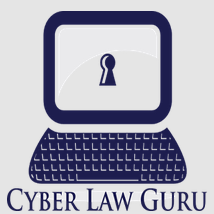According to this report in Deccan Herald the MCIT has constituted a panel under the chairmanship of Mr T K Vishwanathan to rework on Section 66A which was struck down by Supreme Court in what is popularly referred to as the Shreya Singhal verdict.
We invite readers to go through all articles written on this site on the subject of Sec 66A here:
Site Search Google (New Posts) :66A:
Site Search Google (Old Posts) :66A:
Google Search Section 66A+vijayashankar
Duckduckgo search Section66A+naavi
In these articles written by the undersigned, it has been clearly argued that the decision of the Supreme Court in this matter was erroneous. Our contention has always been that this section 66A was not meant to cover “Defamation” and was wrongly mis-applied by Police in various states. Most of the times this was done at the instance of politicians to harass their opponents. However repeated mis-application actually made everyone believe that the section was actually meant to address defamation in social media.
We reiterate that “Publishing” a content on social media visible to many is different from “Sending” a message either in the form of e-mail or SMS . Messaging is a one to one communication. It does not result in “defamation” since no third party is privy to it unless one of the parties to the communication makes it public. However the personal message can cause distress, harassment, threat etc. Section 66A tried to address this and not defamation.
Unfortunately, neither the petitioner nor the battery of lawyers who participated in the discussions on Section 66A understood the legal intent behind the section. They all assumed that Police must be right in arresting persons under Section 66A for social media activities and therefore the section itself was to blame.
Regrettably, the bench which heard this petition was swayed by populist sentiments on upholding the sentiments on “Freedom of Speech” and went on to emphatically assert that “Section 66A” was applicable to “all” communication and not “any communication sent through a communication device or e-mail” and declare its commitment to uphold the democratic principle by murdering the section.
Politicians of the UPA Government who had repeatedly misused the section to meet their political ends suddenly became the champions of free speech to welcome the judgement. Politicians of BJP were too confused and inadequately informed to have the courage to say anything different. The media persons particularly the top TV anchors were too naive and also swayed by their own populist instincts to say that this was a “land mark” judgement upholding the highest principle of democracy.
Naavi was in a minority stating that the judgement was a result of mis perception of the purpose of the section, and though upholding free speech is fine, what the Supreme Court was doing by scrapping the section 66A was actually promoting the use of social media for mischevous use.
Naavi tried to persuade the Government to apply for a review of the decision but could not succeed.
After a few months, it appears that the Government has finally come to realize that removal of Section 66A has the potential of doing more damage than the perceived benefits that it was supposed to bring and is reportedly considering its re-introduction.
It is good that Mr T K Vishwanathan is back to work on the required drafting. Mr Vishwanathan was involved in the drafting of the original ITA 2000 though perhaps he was not involved in the drafting of the amendments of 2008 in which section 66A came in. But he is aware of the early discussions on the philosophy behind ITA2000 and hence should be able to sort it out.
The irony however is that what may ultimately come out is actually a “E-defamation law” which was not available in ITA 2008. ITA 2008 criminalized “Obscene publishing” and not “Defamatory publishing”. Defamation was still a subject of IPC even when committed with electronic documents as defined under ITA 2000/8. This position will now change. There will now be a specific provision on defamation with the use of Twitter, Facebook and other social media vehicles. The so called “Free Speech Protectors” will have to ready themselves for another legal battle once this new law comes into being.
In the meantime, considering the need for National Security and the role of social media in this respect, the undersigned welcomes the move to regulate certain aspects of the misuse of social media.
We however hope that more than “E-Defamation”, what is required to be regulated is use of social media to spread false rumors, creating disharmony in the society etc.
The decriminalization of defamation is already under challenge in the Supreme Court and hence instead of attempting to define “Criminal defamation through electronic documents” as a replacement section of Section 66A, we can simply link “E-defamation” to what is available in IPC by a clarification that any offence under Section 499 of IPC with the use of electronic documents shall be construed as an offence under IPC . The civil aspects of E-defamation can be covered separately with the introduction of a new section say 43B.
Additionally we should not forget to retain the other aspects of Section 66A which Supreme Court in its misplaced activist approach failed to protect. This includes harassment through e-mail and messaging through communication devices, the sending of phishing mails, spamming etc.
We trust that the expert panel under the chairmanship of MR T K Vishwanathan takes into account these suggestions before finalizing their recommendations.
Naavi
You can now seek any Clarification
on Cyber Laws of India through your mobile by using this Android App
Available on Google Play Store







